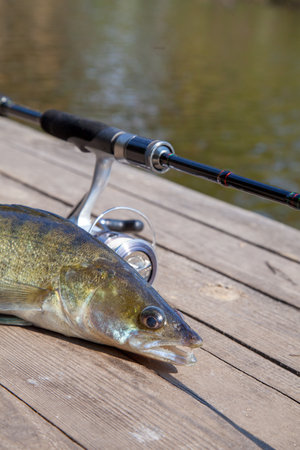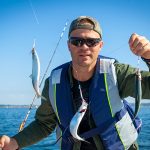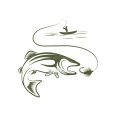Understanding Heavy Cover: Types and Challenges
When it comes to bass fishing in America, “heavy cover” is a term that every angler quickly learns to respect. Heavy cover refers to dense or obstructive areas in lakes, rivers, and reservoirs where fish can hide, ambush prey, and find shelter from predators. These environments are hotspots for big bass, but they also present unique challenges for anglers—especially when using a baitcaster. Understanding what constitutes heavy cover and why it attracts bass is the first step toward mastering this fishing technique.
Common Types of Heavy Cover in American Waters
| Type of Cover | Description | Why Bass Love It |
|---|---|---|
| Thick Vegetation | Mats of lily pads, hydrilla, coontail, milfoil, or grass beds | Provides shade, oxygen, and abundant prey like bluegill or crawfish |
| Submerged Timber | Fallen trees, stumps, brush piles under the water’s surface | Offers ambush points and protection from predators and currents |
| Docks & Piers | Man-made structures extending over water with pilings and shadows | Creates shade and structure for baitfish, attracting hungry bass year-round |
| Rock Piles & Riprap | Banks lined with rocks or underwater rocky outcrops | Attracts crawfish and provides temperature regulation for bass |
The Attraction—and the Challenge—for Anglers
Bass gravitate toward heavy cover because these zones offer everything they need: food, shelter, ideal water temperatures, and places to spawn. However, for anglers, these same features create obstacles. Thick weeds can tangle lines and lures; submerged timber can snag hooks; docks require precision casting to reach sweet spots under the structure. Fishing these areas demands specialized gear (like a sturdy baitcaster), sharp techniques, and the right mindset to land fish without losing tackle.
2. Selecting the Right Baitcasting Gear
When fishing heavy cover, your baitcasting setup can make or break your success. The right combination of rod, reel, and line will help you power through thick vegetation, brush piles, or fallen timber without losing fish or ruining equipment. Here’s a breakdown of the optimal gear choices for these challenging conditions:
Rod: Power and Length Matter
For heavy cover situations, look for a rod with medium-heavy to heavy power and a fast action tip. The extra backbone helps drive hooks through tough mouths and pull fish out of dense cover, while a fast tip allows for accurate casting and quick hooksets. A length between 7’0” and 7’6” gives you added leverage when wrestling big bass from weeds or wood.
Reel: Strength and Control
A high-quality baitcasting reel is essential for fishing heavy cover. Prioritize models with a solid aluminum frame, high drag capacity (at least 15 lbs), and a gear ratio between 7.1:1 and 8.1:1. These features allow you to winch fish out quickly before they tangle deeper into cover. A smooth, reliable braking system improves casting control when skipping lures under docks or pitching into tight spaces.
Line: Durability is Key
Your line takes the most abuse in heavy cover. Braided lines are the go-to choice because they offer superior strength and abrasion resistance compared to monofilament or fluorocarbon. Most pros recommend using braid in the 50–65 lb test range. If water clarity is an issue, add a short fluorocarbon leader (15–20 lb test) for stealth.
Baitcasting Gear Comparison Table
| Component | Recommended Specs | Main Benefits |
|---|---|---|
| Rod | 7’0”–7’6”, Medium-Heavy/Heavy Power, Fast Action | Lifting power, accurate casts, fast hooksets |
| Reel | Aluminum frame, 7.1:1–8.1:1 gear ratio, 15+ lb drag | Toughness, speed, casting control under pressure |
| Line | Braided, 50–65 lb test (add fluoro leader if needed) | Abrasion resistance, strength in dense cover |
Pro Tip:
If you’re new to heavy cover fishing with a baitcaster, don’t skimp on quality—durable gear pays off when you’re pulling big fish out of gnarly spots. Always check your line for frays after each catch to avoid break-offs.
![]()
3. Best Lures and Rigs for Heavy Cover
When it comes to fishing heavy cover with a baitcaster, the right lure and rig selection can make all the difference between a successful day and getting skunked. Dense vegetation, fallen timber, and thick brush require setups that can punch through obstacles and draw strikes from hidden bass or other game fish. Here are some time-tested lures and rigs that American anglers rely on when targeting fish in heavy cover:
Proven Lures and Setups
| Lure/Rig | Best For | Key Features |
|---|---|---|
| Jigs (Flipping/Pitching) | Punching through mats, working around stumps, laydowns | Weed guards, heavy hooks, skirted bodies for bulk |
| Texas-Rigged Soft Plastics | Slipping into thick grass, brush piles, or reeds | Bury the hook point for weedless presentation; use bullet weights to get down deep |
| Topwater Frogs | Fishing over lily pads, matted grass, surface cover | Hollow body design, upturned double hooks for snag resistance |
Why These Lures Work in Heavy Cover
The common thread among these lures is their ability to stay weedless while still enticing big bites. Jigs with stout hooks and brush guards let you flip or pitch tight to structure without snagging up. Texas-rigged worms or creature baits slide smoothly through vegetation thanks to their streamlined profiles. Topwater frogs dance across floating mats where only the most aggressive fish lurk beneath.
Tackle Tips for Maximum Effectiveness
Pair your chosen lures with heavy braided line (typically 40-65 lb test) and fast-action rods for extra pulling power. This setup gives you the leverage needed to haul big bass out of gnarly spots before they wrap you up. When fishing these baits, make sure your drag is set tight—you want to winch fish out quickly rather than play them gently.
4. Casting Techniques for Pinpoint Accuracy
When fishing heavy cover with a baitcaster, accurate casting is crucial to get your lure right where the fish are hiding without scaring them off. Three essential techniques—pitching, flipping, and skipping—can help you place your bait precisely and increase your chances of a strike.
Pitching: Quietly Reaching Close Targets
Pitching is perfect for short-distance presentations under docks, overhanging trees, or into small gaps in vegetation. Hold your bait in one hand and let out enough line so the lure hangs about even with the reel. With a gentle, pendulum-like motion, swing the lure toward your target while releasing it at the right moment to land softly. This technique minimizes splash and keeps fish from spooking in tight quarters.
Flipping: Working Heavy Vegetation Efficiently
Flipping allows you to cover lots of water along thick weed lines or brush piles without making long casts. Pull out several feet of line, hold it in your non-dominant hand, and use a quick motion to drop the lure into precise spots. Flipping lets you work an area methodically, keeping your presentation quiet and controlled for finicky bass hiding deep in cover.
Skipping: Sliding Under Obstacles
Skipping is the go-to move for reaching shaded areas beneath docks or low-hanging limbs where big fish often lurk. Use a sidearm cast to make your soft plastic baits or jigs skip across the surface like a flat rock. The key is to keep your rod tip low and release with enough speed and wrist action to bounce the bait several times before it settles quietly under the cover.
Baitcaster Settings for Precision
| Technique | Reel Brake Setting | Spool Tension |
|---|---|---|
| Pitching | Medium | Tighten slightly to control drop |
| Flipping | Medium-High | Tighten for accuracy |
| Skipping | Low-Medium | Loosen for faster spool start-up |
Pro Tips for Success:
- Practice in your backyard to master these techniques before hitting the water.
- Select baits that skip or penetrate cover well—jigs and soft plastics are favorites.
- Avoid loud splashes; stealth increases your odds of catching pressured bass.
- Tune your baitcaster’s brakes and tension for each technique to prevent backlashes.
- If possible, use braided line for its strength and sensitivity when pulling fish out of dense cover.
By mastering pitching, flipping, and skipping with your baitcaster, you’ll be able to reach those tricky spots where trophy bass hide—and hook more fish without giving away your presence.
5. Hooking and Extracting Fish from the Thick Stuff
When fishing heavy cover with a baitcaster, getting bit is only half the battle—the real challenge is turning that bite into a landed fish. A solid hookset and strategic extraction techniques are essential to avoid losing your catch or damaging your gear in gnarly environments like submerged timber, thick grass mats, or brush piles.
Mastering the Hookset
In dense cover, fish often strike hard and then immediately try to bury themselves deeper. To combat this, use a firm, sweeping hookset rather than a gentle lift. Keep your rod tip low and to the side to drive the hook home while maintaining control. Using braided line with minimal stretch helps ensure power gets directly to the hook point, increasing hookup ratios even in thick vegetation.
Fish-Fighting Tactics in Heavy Cover
Once hooked up, you need both finesse and muscle to extract fish before they wrap around obstacles. Use the following tactics:
| Tactic | Description |
|---|---|
| Immediate Pressure | Apply steady, consistent pressure right after the hookset to steer fish away from snags. |
| Rod Angle | Keep the rod tip angled up but not too high—this helps leverage fish upward without giving them slack. |
| Pump & Reel | Pump the rod to pull fish toward you, then quickly reel in slack line between pumps to maintain tension. |
| Short Line | Try to keep as little line out as possible—shorter lines mean less give and more direct control over the fish. |
Pro Tip: Don’t Horse It—But Don’t Baby It Either!
A common mistake is either horsing a fish too aggressively (which can break gear or straighten hooks) or being too gentle (which lets fish tangle in cover). Strike a balance by letting your rod and drag system do their jobs. Set your drag tight enough for power but loose enough to give when needed.
Key Considerations for Success
- Always check your line and knots after each catch—heavy cover takes its toll on tackle.
- If a fish does get wrapped up, try changing angles or giving slack briefly; sometimes fish will swim free on their own.
- Choose hooks that are strong yet sharp—flimsy hooks won’t survive heavy cover battles.
With these hookset and extraction strategies, you’ll dramatically increase your landing percentage when fishing America’s toughest bass haunts. Remember: in heavy cover, every decision counts!
6. Safety and Conservation in Heavy Cover Areas
Fishing heavy cover with a baitcaster is not only about landing big bass—its also about ensuring you fish responsibly and safely. American waters, from southern swamps to northern weed beds, are home to a wide range of wildlife and sensitive habitats. Here’s how you can protect yourself, local wildlife, and the environment while enjoying your day on the water.
Safe Fishing Practices
Navigating thick brush, submerged timber, or dense vegetation requires caution. Always wear a life jacket when fishing from a boat or kayak, especially in unpredictable areas. Use polarized sunglasses to spot underwater hazards and protect your eyes from stray hooks. Remember to keep a first aid kit handy for minor injuries like cuts or insect bites.
| Hazard | Safety Tip |
|---|---|
| Submerged obstacles | Scout the area visually; avoid high-speed boating near cover |
| Biting insects/snakes | Wear long sleeves/pants; check surroundings before reaching into cover |
| Hooks and tackle mishaps | Use pliers for hook removal; keep gear organized |
Respecting Local Wildlife
Dense structure often harbors more than just fish. Be aware of nesting birds, turtles, frogs, and even alligators in certain regions. Avoid disturbing nests or dens. If you encounter protected species like bald eagles or manatees, give them plenty of space and follow local guidelines regarding endangered wildlife.
Common Wildlife Encounters by Region:
| Region | Wildlife |
|---|---|
| Southeast (Florida, Georgia) | Alligators, ospreys, turtles |
| Northeast (New York, Pennsylvania) | Beavers, herons, muskrats |
| Midwest (Minnesota, Wisconsin) | Bald eagles, loons, deer |
| West (California, Texas) | Cormorants, snakes, waterfowl |
Minimizing Environmental Impact
The future of American fisheries depends on our stewardship today. Practice catch-and-release whenever possible—especially with larger breeding fish. Use barbless hooks or crimp barbs for easier releases. Retrieve all discarded line and tackle to prevent wildlife entanglement. Avoid pulling up aquatic vegetation unnecessarily; these plants provide critical habitat.
Sustainable Fishing Checklist:
- Pack out all trash—including used fishing line and lures
- Avoid use of lead weights; opt for tungsten or steel alternatives
- Follow all local regulations on bag limits and restricted areas
- Report invasive species sightings to local authorities
- Educate fellow anglers about best conservation practices
By prioritizing safety and conservation while fishing heavy cover with a baitcaster, you ensure that both you and future generations can enjoy America’s diverse fishing opportunities. Responsible angling preserves the thrill of the chase—and the wild beauty of our nation’s waterways—for years to come.


